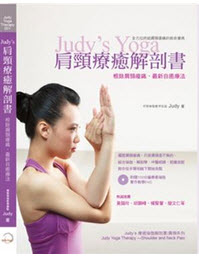好快,转眼间,这个周六就要办活动了,两个月前,大伙还在把酒言欢,依依不舍地分离,没想到,真没想到,咱们这个周六就要见面了,真是人生一大乐事,哇!哈~哈~哈,岂不畅快,写这么多,就是一个字,爽!!!
好朋友相见,当然快乐,而且我们还不是鬼混打屁杀时间,我们可是在研习哟,林老师一定很欣慰,大家都如此上进可取,很好,很好.老师在~~~高雄~~也可感到欣慰了.
有些同学实在是太谦虚了,一直要我翻一下讲义,害我情人节大餐差点泡汤,只保留十分钟.还好,赶去还来得及,又吃了一顿好料.只是多了个八烛光的强力灯泡,我女儿,一直问,为什么爸比今天要请客,为什么要请我和妈咪,其实,你是跟班的,我才是女主角.你是前世情人,那妈咪是爸比的前世什么人啊!!!这~~可能是你爸比的老妈吧!老公脸上三条线.
好了,不鬼扯了,现在就老老实实地翻一下文章.但我的英文也不太好,各位将就一点,而且,我也留了一个意外的礼物给各位,大家才有参与感嘛!!!
现在要报名的同学还来得及,因为我们希望这么的活动,各位都能参与.将来那一天各位为人师表,这些知识一定用得上,再次提醒各位,
时间:8月5日(六)11:30~14:00
地点:梵瑜伽(捷运板南江子翠站四号出口即可看到,双十路上,可看右侧网站有介绍)
内容:讨论膝关节,以下面文章为主
费用:500元(附议义,数量有限,晚来者可于事后至网站自行下载)
报名:请电梵瑜伽02-82534335
ps:理事长演讲是12:30~13:30 11:30~12:30联谊和温习时间
(不附中餐,现场禁食,但附议义,数量有限,晚来者可于事后至网站自行下载)
各位猜猜看,那一张图是正确的盘腿姿势


答案就在下文自己看了??
Protect the Knees in Lotus and Related Postures盘腿及其相关体位之膝盖保护
By learning basic anatomical principles, you can teach your students how to safely open their hips without injuring their knees. 透过学习基本的解剖学理论你可以指导学生如何安全地打开髋关节,而不会伤到膝盖
By Roger Cole
Lotus Pose (Padmasana) is a supreme position for meditation, and Lotus variations of other asanas can be profound. However, forcing the legs into Lotus is one of the most dangerous things you can do in yoga. Each year, many yogis seriously injure their knees this way. Often the culprit is not the student but an overenthusiastic teacher physically pushing a student into the pose.
莲花式(双盘)是冥想最至高无上的姿势,其相关体位法也是较深奥的,然而强压小腿硬做双盘其实是练瑜伽最危险的动作之一.每年,都有许多瑜伽研习者因此而受伤,其实罪过都不是出在学生本身,而是教学过度热心的老师不断地督促学生做此动作
补充:(此指学生髋关节未全开时,老师就要求学生做双盘,其实是造成学生膝关节受伤的主因)
Fortunately, there are techniques that make Padmasana much safer to learn. Even if you don’t teach full Lotus, you can use the same techniques to protect students in related postures, such as Ardha Baddha Padmottanasana (Half-Bound Half-Lotus Forward Bend), Baddha Konasana (Bound Angle Pose), and Janu Sirsasana (Head-to-Knee Pose). These poses can do wonders for the hip joints and the muscles around them. Unfortunately, many students feel a painful pinching sensation in the inner knee in all of them. To understand why, and how to prevent it, consider the underlying anatomy.
可喜地是,现在有许多技巧可以让学习双盘变得更安全,即使你不教双盘,你也可以让学生在做相关的体位法,使用相同的技巧保护学生,例如: Ardha Baddha Padmottanasana(Half-Bound Half-Lotus Forward Bend直立单盘前弯式) Baddha Konasana (Bound Angle Pose)坐式曲膝双脚脚掌相对,或是Janu Sirsasana (Head-to-Knee Pose)坐式单脚伸直另一脚单盘脚掌抵在另一腿之内侧.这些动作对髋关节及其周围肌肉有意想不到的好处.不幸地是,很多学生在做这些动作时,膝盖内侧会有好像被人捏痛的感觉.看一下右图你就可以了解为何会如此,以及该如何预防
注:下图左方是安全图,主因在于股骨头有外转,看箭头就知道,右方是未做外转的预备动作即盘腿,看到膝关节那条蓝色韧带了吗?由于膝与小腿的外侧角度太大它被拉得太彻底,是告成膝盖受伤的主因.
 <
<
Figure 1Safe Knee Placement Figure 2 Unsafe Knee Placement
The problem starts at the hip joint, where Lotus and its relatives require an astounding degree of mobility. When you move from a neutral, seated posture, such as Dandasana (Staff Pose), to Baddha Konasana, the ball-shaped head of the thighbone must rotate outward in the hip socket about 100 degrees. Bending the knee and placing the foot in preparation for Janu Sirsasana requires somewhat less external rotation,
征结来自髋关节的活动力,双盘及相关姿势要求其要有惊人的活动角度.当你从Dandasana (坐姿上身挺直,双脚伸直,注意此动作之髋关节角度是零)变化成Baddha Konasana(束角式=将腿打开脚掌呈翻书姿势)时,股骨头上方有个股头颈会从髋关节窝外旋100度,若是做Janu Sirsasana (单腿交换伸展式=坐姿一脚伸直另一脚抵大腿内侧)要求的外旋角度会比较小一点.
but as a student bends forward in the pose, the tilt of the pelvis relative to the femur brings the total rotation to about 115 degrees. Padmasana requires the same amount of external rotation (115 degrees) just sitting upright, and the angle of rotation is somewhat different, making it more challenging for many students. When we combine the Padmasana action with a forward bend, as we do in Ardha Baddha Padmottanasana, the total external rotation required at the hip joint jumps to about 145 degrees. To put this in perspective, imagine that if you could turn your thighs out 145 degrees while standing, your kneecaps and feet would end up pointing behind you!
但是,当学生上身挺身前弯时,骨盆会稍稍离地前倾,此时股骨头的外旋角度将呈115度.Padmasana(双盘)要求的外旋角度也是115度,但上身若坐得很正,外旋的角度还是会有点小差异,然而这对学生而言,却是极大的挑战.当我们以立姿前弯的动作再结合双盘即所谓的Ardha Baddha Padmottanasana,(直立单盘前弯式)整个髋关节的外旋角度约145度,也就是说,想像一下当你成功完成这个外旋145度的直立单脚单盘前弯式时,你的膝盖和脚将你身后结束??(救命啊!这句我不是很懂!但重点就是大腿要尽量外旋就对了)
If a student can achieve all of this outward rotation at the hip in Lotus, they can then safely lift the foot up and across onto the opposite thigh without bending the knee sideways (see Figure 1). Some people with naturally mobile hips can do this easily, but for most people, the thighbone stops rotating partway into the pose. This limitation may be due to tight muscles or tight ligaments or, in some cases, to bone-to-bone limitations deep in the hip. When the femur stops rotating, the only way to get the foot up higher is to bend the knee sideways. Knees are not designed to do this-they are only designed to flex and extend.
假如学生能轻松地将大腿外旋得很彻底,那她们就能安全地抬起脚放到对侧大腿上完成双盘动作,而不会弯曲到他们的膝盖(也就是说根本没用到膝盖,见上图一),有些人天生髋关节就比较灵活可以很轻易地完成,但大部分的人只能做到某种程度.这种局限性是由于大腿的肌肉或韧带太紧所引起,或是,在某些案例,是髋关节等骨头太硬所造成.当大腿无法外转,只能将脚抬高地斜弯膝盖.膝盖的使命不是设计来做这些动作的,它的主要功能是曲膝(蹲下)或伸展.
If an overzealous student continues to pull the foot up after his thigh stops externally rotating, or if a student or teacher forces the knee downward, the thighbone and shinbone will act like long levers that apply great force to the knee. Like a pair of long-handled bolt cutters, they will pinch the inner cartilage of the knee between the inner ends of the femur and tibia. In anatomical terms, the medial meniscus will be squeezed between the medial femoral condyle and the medial tibial condyle. In layman’s terms, the inner ends of the thigh and shin will squeeze the inner cartilage of the knee (See Figure 2). With even moderate force, this action can seriously damage the meniscus. Such injuries can be very painful, debilitating, and slow to heal.
假如学生求表现也不管髋关节是否有充分外旋的能力就拚命练盘腿,或是学生或老师太鸡婆地跑去强压翘起的膝头,大腿和小腿的动作就像是使用膝盖为轴心的长杠杆,这将导致股头及小腿内侧部分的疼痛感.以解剖学的名词来说,就是指膝盖内侧的半月板会被内侧股骨髁以及胫骨髁所挤压.以外行人的话来说,就是指大腿及小腿的内侧将挤压膝盖内侧的软骨板(见上图),即使是轻柔地施力,也会严重地伤害半月板,像这样的伤害会使得你的膝盖变得疼痛,功能衰退,最后只好求助医疗.

以上这张图膝盖俯视图,左边是外侧,右边是内侧,各位可以看到medial meniscus内侧半月板及外侧半月板lateral meniscus
 左图是右膝伸直,中间有髌骨patella,很多时候是patella角度跑掉,造成knee pain.右图是弯曲,可以清楚看到patella 和股骨femur的角度.
左图是右膝伸直,中间有髌骨patella,很多时候是patella角度跑掉,造成knee pain.右图是弯曲,可以清楚看到patella 和股骨femur的角度.
Poses like Baddha Konasana and Janu Sirsasana can cause similar pinching. In these postures, we do not usually pull up on the foot, so the problem comes mainly from the lack of outward rotation of the thigh relative to the pelvis. Let’s first look at Baddha Konasana.
像这个Baddha Konasana(翻书动作)和Janu Sirsasana(坐姿单腿交换伸展式)也会引起同样的疼痛感.这些动作也不太须要盘腿,因此问题出在髋关节没有外转.就先来看看翻书这个动作啦
Remember, to stay upright and stable while placing the feet in Baddha Konasana, the heads of the femurs will turn strongly outward-about 100 degrees-in the hip sockets. Because this requires so much flexibility of the entire hip region, many students instead allow the top rim of the pelvis to tilt backward while placing the feet in Baddha Konasana. They move the thighs and pelvis as a single unit. This requires little rotation of the heads of the femurs in the hip sockets, and it demands little flexibility. It also defeats the aim of mobilizing the hip joints and causes the entire spine to slump.
记得,翻书这个动作,上身挺直挺稳当脚掌两两相对,股骨头才能有有地朝外转100度,因为这个需要髋关节有强大的灵活度,但很多学生无法做到只好让屁股稍往后倒才能抓到自己的双脚.这时,骨盆和大腿已成为一体.其实,这个动作并不难,只要少许的大腿外旋角度以及少许的弹性就能成功.这个动作,也同时可以强化髋关节的灵活性并让你的脊椎稳稳地向下挺直.
As a teacher, you may find yourself instructing the slumping student to tilt the top rim of the pelvis forward in order to bring them upright. If their hips are loose enough, this instruction won’t create a problem; the pelvis will tilt forward, the thighs will remain externally rotated, and the spine will come upright. But if the hips are too tight, the femurs and pelvis will roll forward as a single unit. While the thighbones rotate forward, the shins will not, resulting in the aforementioned pinching in the inner knees. This explains why some students do not feel any knee pain in Baddha Konasana until they attempt to tilt the pelvis completely upright.
 Ps:从现在起,你们就自己看了,真的有点难翻.但看得比较快,比手划脚也快,就是要手打出来很慢.我不逐字翻了,下回我会写心得,这还比较快.接下来,靠大家接力翻了.这就是礼物啦,送大家,自己挑一段,翻好自动po上来.
Ps:从现在起,你们就自己看了,真的有点难翻.但看得比较快,比手划脚也快,就是要手打出来很慢.我不逐字翻了,下回我会写心得,这还比较快.接下来,靠大家接力翻了.这就是礼物啦,送大家,自己挑一段,翻好自动po上来.
Some students complain of knee pain only when they bend forward in poses that require external rotation. That’s because a forward bend like Janu Sirsasana demands even more external rotation at the hip joint. Again, in the tight student, the pelvis and femur roll forward as a single unit, pinching the inner knee. Of course, in either Baddha Konasana or Janu Sirsasana, pushing the knee(s) downward makes the problem worse, because tight muscles make the femur rotate forward as it is pressed.
Now back to Lotus Pose. Forcing the knees into Padmasana by lifting up on the ankles can also injure the outside of the knee. When a student lifts the shinbone without adequately rotating the thigh, it not only closes the inner knee, it opens the outer knee, overstretching the lateral collateral ligament. If a student then forcibly turns the feet so the soles point upward (which people often do to get the feet higher up on the thighs), they can worsen the strain. This action of turning the soles actually pulls the anklebone away from the knee, creating a chain reaction all the way up to the lateral collateral ligament.
What’s the solution? First, use common sense. Never force a student into Lotus or related poses, and discourage students from forcing themselves. Teach students not to push into pain, especially knee pain. Do not adjust the pose by pulling on the foot or ankle, nor by pushing down on the knee. Instead, either teacher or student should apply firm outward rotating action to the thigh, turning the femur around its long axis, using the hands or a strap. (For full instructions on how to do this adjustment, see the sidebar.)
If your student already has knee pain but can do basic standing poses comfortably, teach these poses first, with careful alignment. This can bring her a long way toward recovery. When you reintroduce problem seated poses such as Baddha Konasana and Janu Sirsasana, use the hands or a strap to apply the same outward rotating action described above for Lotus.
For students who are ready to learn Lotus, introduce it gradually, working from poses that require less external rotation at the hip (such as sitting in Ardha Baddha Padmottanasana without bending forward) to those that require more (such as full Padmasana). Wait until last to introduce poses that require the most external rotation (forward-bending variations of full Padmasana). As students are learning these poses, teach them to rotate their thighs outward either with a hands-on adjustment or a self-adjustment. Instruct them to monitor and avoid pinching sensations in the inner knees.
Encourage your students to go slowly, be patient, and persist. In time, they may be able to sit comfortably and meditate deeply in Padmasana. If not, remind them that true meditation lies not in some specific posture but in the spirit of their practice. Help them find a posture that suits them, then guide them to settle in and experience the stillness that is yoga.
Adjustments instructions
Adjustment Instructions
It’s always a good idea to ask a student for permission before you do an adjustment. You can perform this one with or without a strap. (See Figure 1 to view strap placement.)
To begin, kneel behind and to one side of the student. To do the adjustment manually, grip the upper one-third of the thigh with both hands and turn it firmly outward. To use a strap, encircle the upper one-third of the thigh with it once or twice. Pass the free end through the buckle the first time around. When you’ve finished setting up the strap, make sure that the loose end is to the outside of the thigh, so that pulling outward on the strap will externally rotate the thigh.
Use one hand to pull firmly outward and slightly downward, being careful not to force the knee downward. Place the other hand on the back of the pelvic rim and use it to prevent the pelvis from tilting backward. While adjusting, ask the student for feedback and heed what he says. Watch his facial expression and look for signs of relief, not discomfort. When done correctly on a healthy student, the rotating action can be quite strong without causing injury.
[……]
Read more






 左图是右膝伸直,中间有髌骨patella,很多时候是patella角度跑掉,造成knee pain.右图是弯曲,可以清楚看到patella 和股骨femur的角度.
左图是右膝伸直,中间有髌骨patella,很多时候是patella角度跑掉,造成knee pain.右图是弯曲,可以清楚看到patella 和股骨femur的角度.


